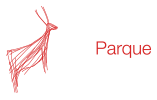
- This event has passed.
Graça Morais – Maps of Earth and Time

The relation with the most primitive art form, unknown then by the little girl who doodled on the boulders in Vieiro, is not something new in the manner Graça Morais draws and paints, since it has been a source of formal and pictorial investigations throughout more than 50 years of her artistic life.
With over 14 thousand years, the mysterious figure that is known as bison-man and was found on the Les Trois-Frèrescave, in France, is one of the many references to the *Palaeolithic art that GraçaMorais transfers to her painting. As in many of her outstanding *metamorphoses, this uncommon representation of half-man and half-animal would become the character in the enormous sceneries that she created in 1993 for the play The Screens by *Jean Genet, brought to the stage by theExperimental Theatre of Cascais.
Therefore, it is not rare for this *iconography, especially in the figurations of animals or female figures such as the *Venus by Willendorf, to inhabit her drawings and paintings as the main characters. There are numerous examples, namely in the work she develops during the 1980s and 1990s, as in the series Maps and the Spirit of the Olive Tree or Vieiros that she displayed in 1983 at the 17th International Art Biennale of São Paulo, in Brazil, and later at the Museums of Modern Art of São Paulo and Rio de Janeiro.
The huge screens that GraçaMorais creates in 1995 for the scenography of the play Richard II, by *William Shakespeare, held on the D. Maria II National Theatre (whose size is impossible to present in this exhibition), result also from the multiple readings of this ancient art. Not only by the way it quotes and takes hold of colours and textures, but also in the manner it transforms the animals that are found on the famous walls of *Chauvet and *Altamira Caves.
However, this alignment with the *Palaeolithic stands out in her talented drawing, visible in the overlapping of lines and forms, in the sudden interruption of the stroke or the fusion of elements, where the relation with Côa’s engravings is not only highlighted, but also cuts across the works that were carefully gathered for this exhibition, some of which are unprecedented.
Curatorship: Jorge da Costa
____________________
*Palaeolithic: First period of history of Humankind
*metamorphosis: transformation process that enables certain animals to become adults
*Jean Genet: French writer and playwright (1910-1986)
*iconography: language that uses images to depict a subject
*Venus by Willendorf: a 11-centimeter limestone statue of a woman of exaggerated features to represent fertility
*William Shakespeare: British writer (1564-1616) regarded as national poet; known, for instance, for the plays Hamlet, Macbeth and Romeo and Juliet
*Chauvet Cave: located on the south of France, it has its walls decorated with 435 paintings of animals
*Cave of Altamira: situated in Cantabria, in Spain, it has paintings in various colours that represent animals, human figures and abstract drawings

